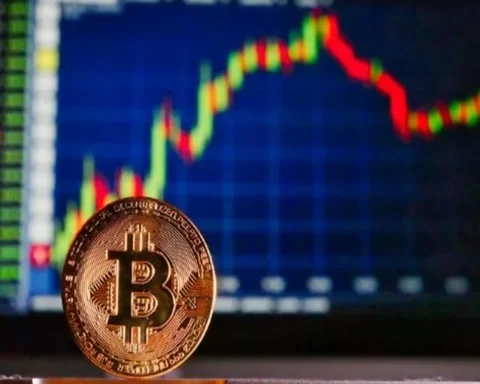On September 22, the Dollar Strength Index (DXY) reached its highest point in nearly a decade, signaling a growing favor for the United States dollar compared to other fiat currencies like the British pound, euro, Japanese yen, and Swiss franc.
This surge in demand, however, has left investors pondering its potential impact on Bitcoin and cryptocurrencies, although the connections between the two remain somewhat tenuous.
The DXY made headlines by confirming a golden cross pattern, where the 50-day moving average surpassed the longer 200-day moving average.
This technical signal is often interpreted as a precursor to a bullish market.
Remarkably, the U.S. dollar exhibited strength in September despite concerns about inflation and economic growth in the world’s largest economy.
Expectations for U.S. GDP growth in 2024 sit at a modest 1.3%, significantly lower than the four-year average of 2.4%. This slowdown is attributed to factors such as tighter monetary policy, rising interest rates, and diminishing fiscal stimulus.
However, not all increases in the DXY reflect unwavering confidence in the U.S. Federal Reserve’s economic policies.
When investors opt to sell U.S. Treasurys and hold onto cash, it suggests potential recession or heightened inflation.
The current 3.7% inflation rate has dampened the appeal of a 4.4% yield, driving investors to demand a 4.62% annual return on five-year U.S. Treasurys as of September 19, marking a 12-year high.
Surprisingly, investors are choosing cash over government bonds, a counterintuitive move that aligns with the strategy of waiting for more favorable entry points.
They anticipate the Fed’s continued interest rate hikes to secure higher future yields.
READ MORE: Coinbase’s Layer-2 Network Base Surpasses Solana with $397.32 Million TVL Surge
The relationship between a stronger DXY and reduced demand for Bitcoin may not be straightforward.
While there’s a decreased appetite for risk-on assets, exemplified by the S&P 500’s 4.3% September decline, investors are aware that hoarding cash doesn’t guarantee stable purchasing power.
The government’s ongoing debt ceiling increases risk dilution, diminishing nominal returns due to the expanding money supply.
This explains why assets like Bitcoin and select tech companies might thrive during an economic slowdown.
If the S&P 500’s downtrend persists, investors may initially flee risk markets, potentially affecting Bitcoin negatively.
However, this analysis overlooks the fact that inflation and recession pressures are likely to increase the money supply, favoring Bitcoin as investors seek refuge against “stagflation” – stagnant growth amid rampant inflation.
In conclusion, the DXY’s golden cross may not necessarily spell doom for Bitcoin, especially when considering longer timeframes.
The cryptocurrency could continue to serve as a hedge against economic turbulence, even as traditional markets experience fluctuations.
Other Stories:
Couple Faces Trial Over $10.5 Million Mistakenly Sent to Them
Terra Classic Community Votes to Halt USTC Minting for Stable Peg Restoration
Bitcoin Holds Steady at $26,500 as Accumulation Continues Amid Market Stability




